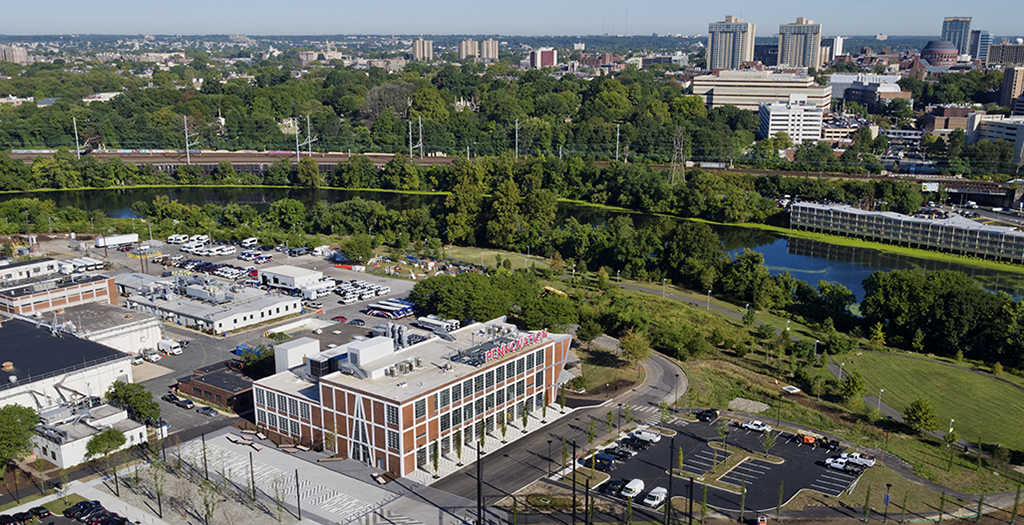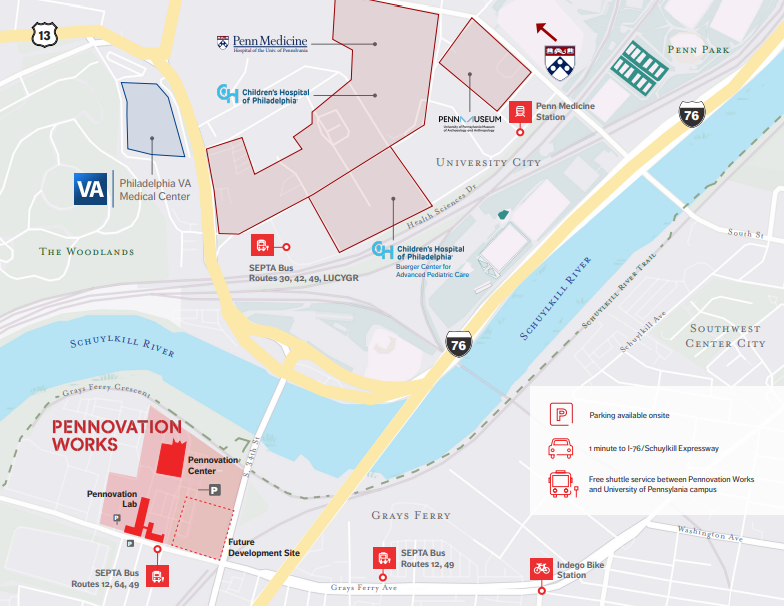
Our Spaces
Pennovation Works is an innovation hub with a variety of premium shared or private space options for innovators and researchers around the Tri-State area. Our state-of-the-art facilities include:
- Flexible Startup Incubator Offices & Labs
- Commercial Offices or Lab and R&D Space
- Scientifically-Advanced Equipment
- Dry Labs & Maker Spaces
- Offices & Co-Working Desks
- Seminar & Meeting Rooms
- Cafe & Kitchenette Areas
- Venues for Events & Programs
Our Services
Pennovation Works fosters a sense of community and encourages collaborative endeavors throughout the regional innovation ecosystem. We offer a diverse array of programs and resources, including:
- Mentor-matching with subject matter experts
- Office hours with Penn's commercialization and venture development team
- Networking with entrepreneurs, investors, partners, and innovators
Our Team
Pennovation Works is supported by a dedicated team of individuals working to enhance member's experience and education within the ecosystem.
- Denita Henderson, Managing Director of Pennovation Works
- Kirsten King, Associate Director, Engagement & Experience
- Jaime Sweet, Associate Director, Education & Entrepreneurship
- Vinny Chrepta, Manager, Engagement & Experience
- Edward Bell, Lab Manager
- Kristy Carabello, Communications Associate
- Sara Frederick, Experience Supervisor
Our Location
Strategically situated adjacent to University City, Pennovation Works is located at the on-and-off ramps of I-76, and is minutes away from Center City, FedEx facilities, and the Philadelphia International Airport.
The site is connected to the community by:
- Public transit routes
- A private dedicated Pennovation Bus loop between the Works and Penn's main campus
- The newly expanded Schuylkill River bike and walking trail at Grays Ferry Crescent

![]()